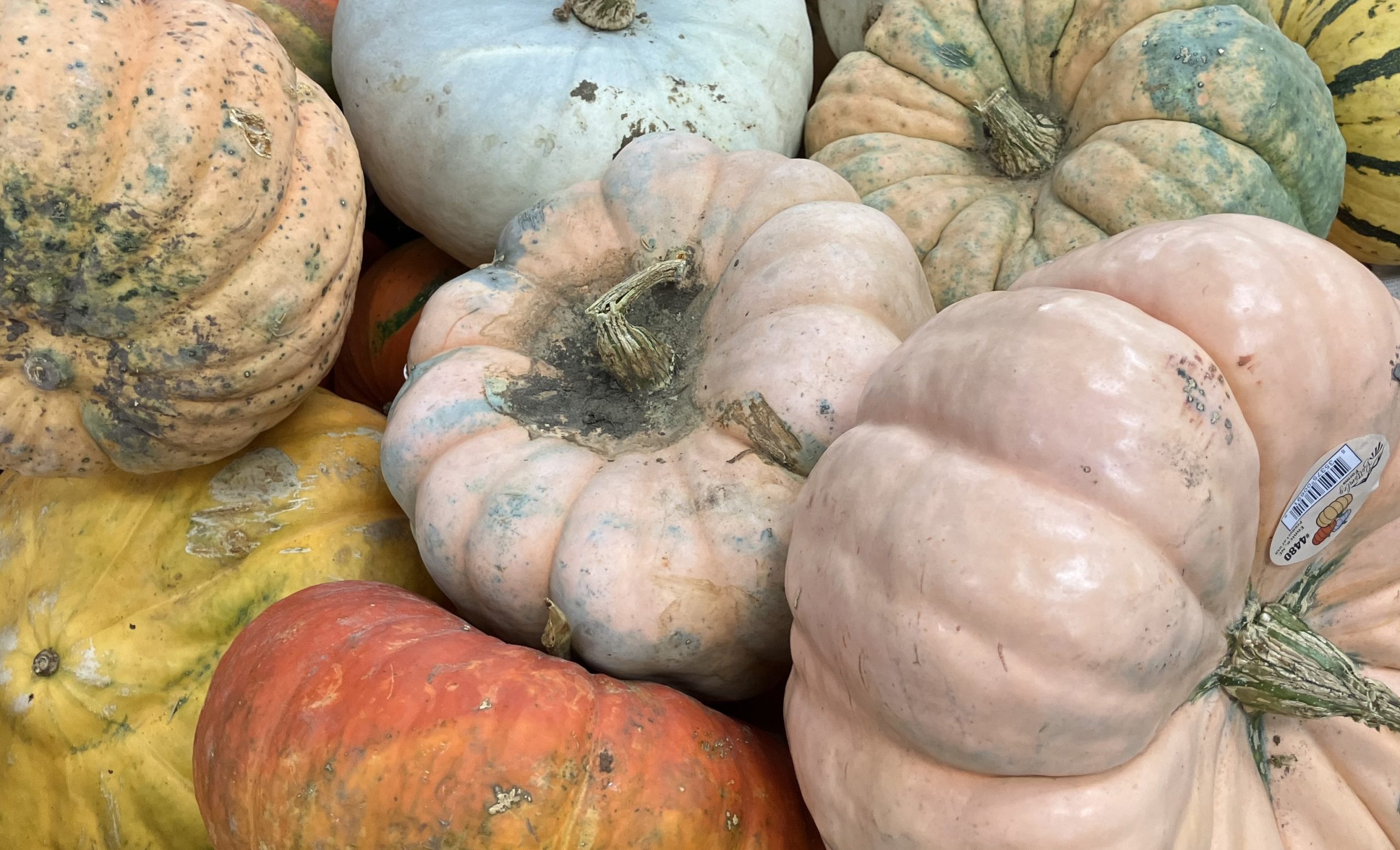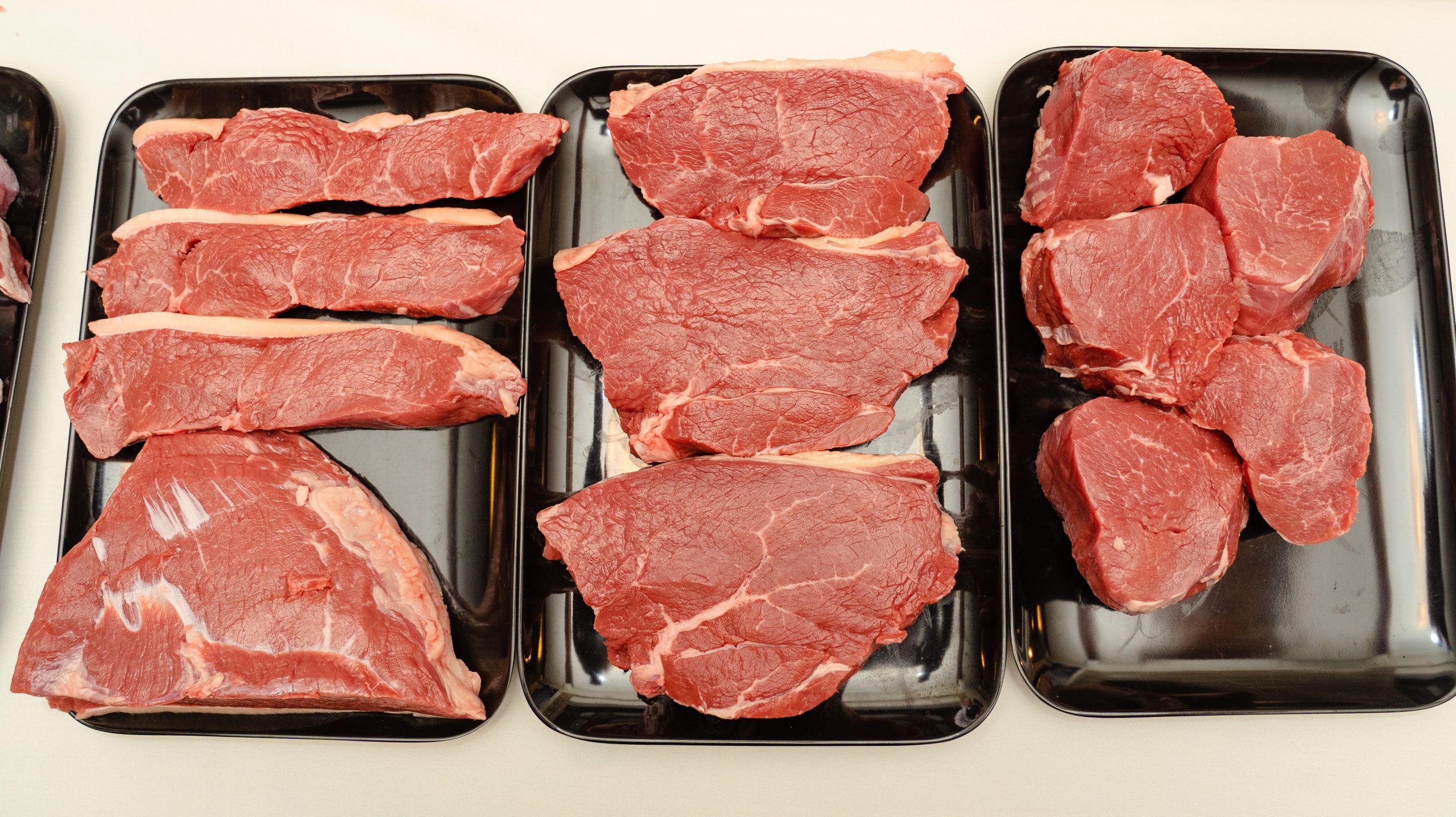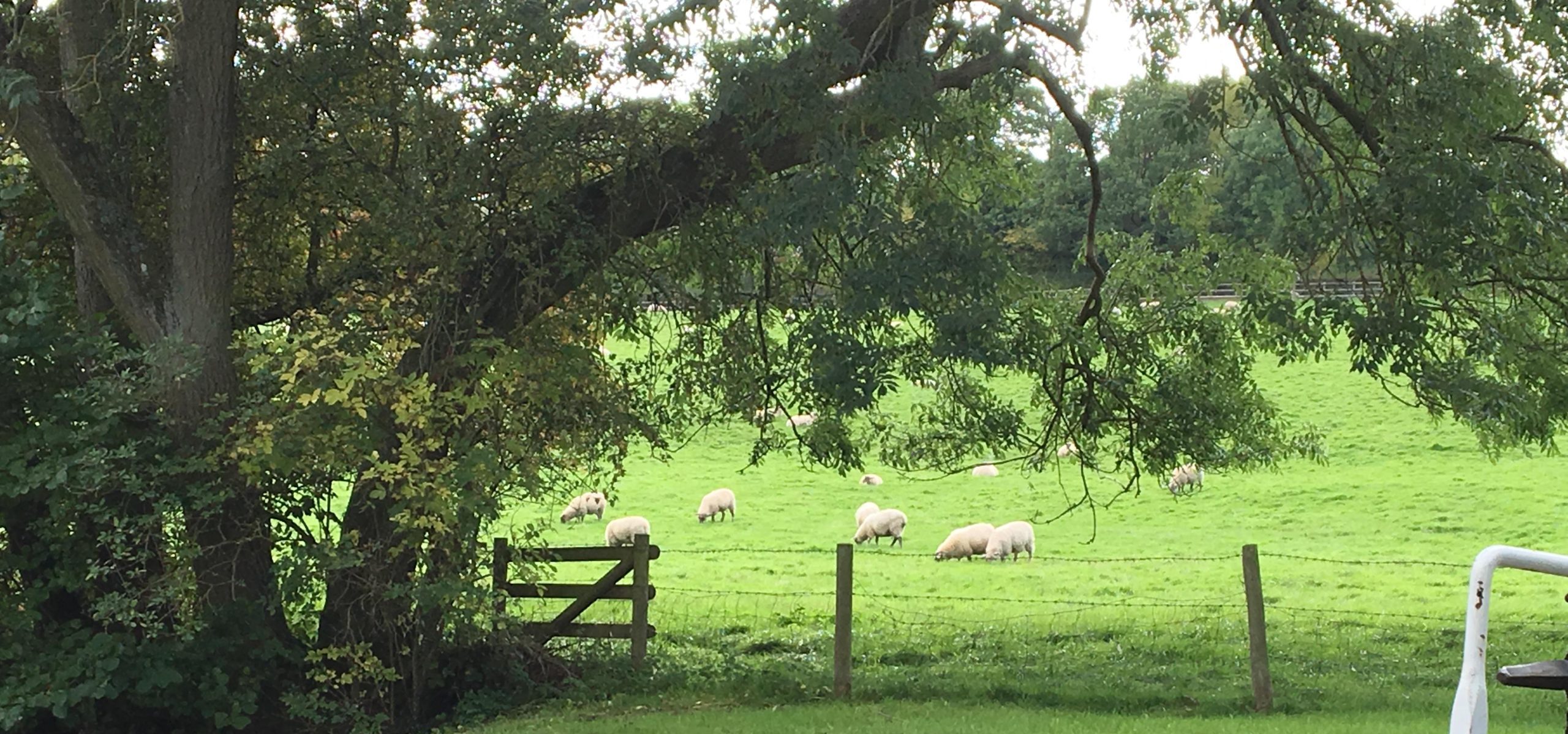We look at how the diet of an animal impacts the flavor, nutritional value, and overall quality of the meat, as well as how different choices impact the environment.
When choosing which meat to buy, it’s important to consider whether an animal has been grain-fed or pasture-fed, as each has distinct qualities.
Understanding the differences can help you make an informed decision that suits your customers’ taste preferences and nutritional goals. You may also want to associate your brand with a particular choice for environmental reasons.
Flavor
One of the most noticeable differences between grain-fed and pasture-fed meat is the flavor. The diet of the animal plays a significant role in determining how the meat will taste.
- Grain-fed meat: Animals that are grain-fed, typically consuming diets rich in corn or soy, produce meat with a milder flavor. This is because grains lead to a higher fat content, which can result in a more consistent taste that is often described as buttery or tender. This milder flavor is particularly appealing in certain culinary traditions like in Japan and South Korea for example or for those who prefer less intense flavors.
- Pasture-fed meat: Animals that are pasture-fed, meaning they graze on natural pastures, produce meat with a more robust, earthy flavor. This is often favored by those who appreciate a more distinct and varied flavor profile in their meat. Pasture-fed meat also tends to have a slightly firmer texture, which can enhance the eating experience for some consumers. For instance, Hispanic consumers generally prefer pasture-fed, which is often described as richer and more complex.
Nutrition
Here are some of the main differences between grain-fed and pasture-fed meat in terms of nutrition:
- Healthy fats: Pasture-fed meat is known to contain higher levels of polyunsaturated fatty acids, commonly referred to as “healthy fats.” These fats, including omega-3 fatty acids, are beneficial for heart health and have anti-inflammatory properties. Grain-fed meat tends to have higher levels of omega-6 fatty acids, which, while also essential, need to be balanced with omega-3s in the diet.
- Vitamins and antioxidants: Pasture-fed animals typically consume a diet rich in plants, which leads to higher levels of certain vitamins and antioxidants in their meat. For example, pasture-fed meat often has higher levels of vitamin E, a powerful antioxidant that can help protect cells from damage. Vitamin E also helps the meat retain its bright red color for longer, an appealing trait for consumers who associate redness with freshness and quality.
- Conjugated linoleic acid (CLA): Another benefit of pasture-fed meat is its higher content of CLA, a type of fat that has been associated with improved immune function, reduced body fat, enhanced muscle growth, and other health benefits.
Environmental Considerations
When it comes to environmental impact, pasture-fed farming practices are often seen as more sustainable. This is because they rely on natural grazing and do not require the same level of resource-intensive grain production.
Pasture-fed livestock typically graze on land that is unsuitable for growing crops, making efficient use of available land. Additionally, well-managed grasslands sequester carbon in the soil, which contributes to environmental sustainability.
Grain-fed livestock is often raised in more intensive farming operations. These can have a higher environmental impact due to the resources needed to grow and transport grains.
The Bottom Line
The choice between grain-fed and pasture-fed meat ultimately comes down to personal preference, nutritional goals, and environmental values. Grain-fed meat offers a milder flavor and is often more widely available, while pasture-fed meat provides a richer taste and additional health benefits, including higher levels of healthy fats and vitamins.
When selecting meat, consider what matters most to you. Both grain-fed and pasture-fed options have their merits, and understanding these differences can help you make a choice that aligns with your preferences and values.
Whether you’re grilling a steak or preparing a roast, knowing how the diet of the animal influences the meat can enhance your appreciation for the meal on your plate.



